In Amsterdam, bikes outnumber people — and a few lucky ones are covered in flowers.
Here’s what I discovered about a city that moves on two wheels (and sometimes blooms).
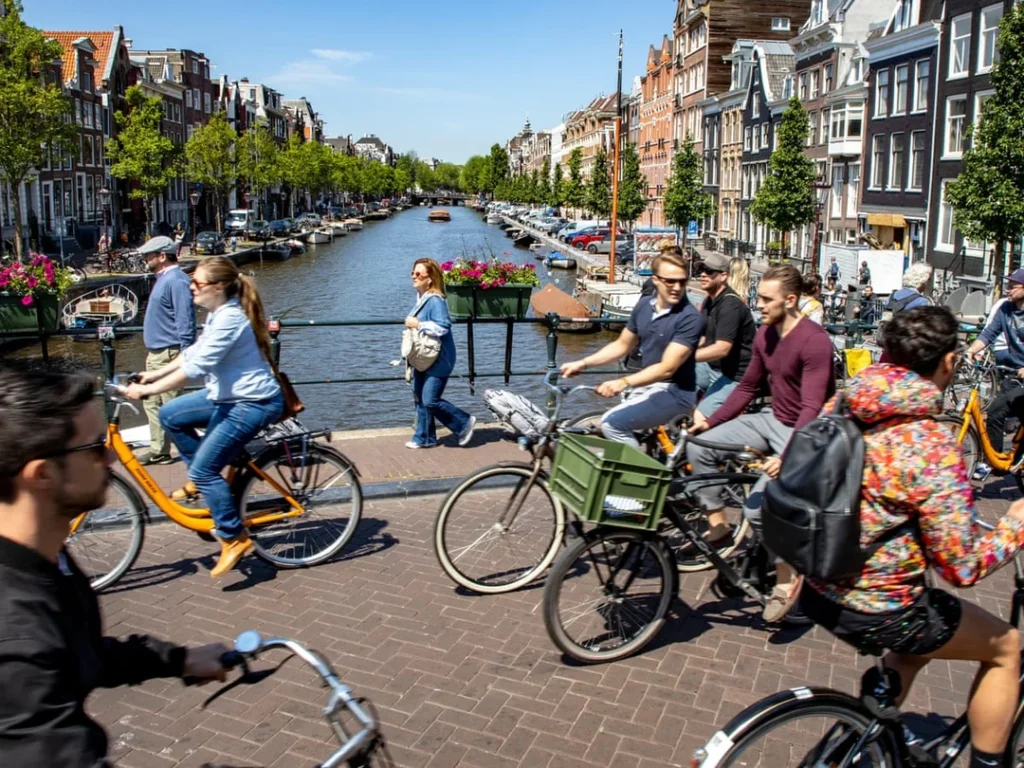
One of the first things you notice when you walk the streets of Amsterdam — and it doesn’t take long — is the rhythm of movement.
It’s not the roar of traffic you hear first.
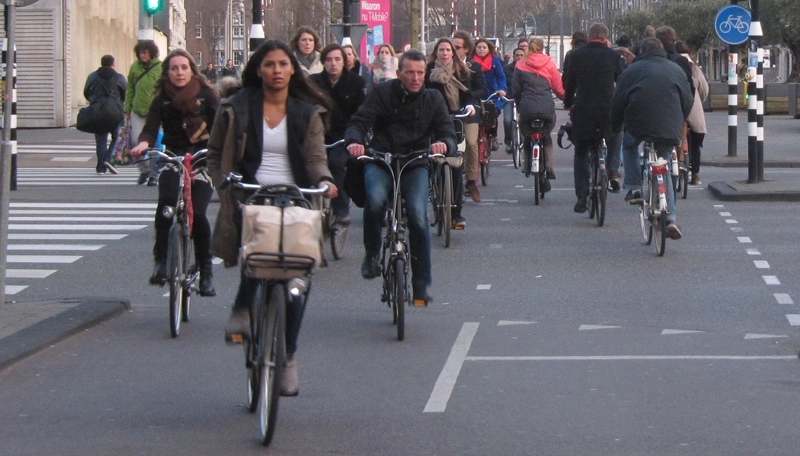
It’s the soft whirr of bicycle tires, the ding of bells, and the easy conversations of people on two wheels. There are bikes everywhere.
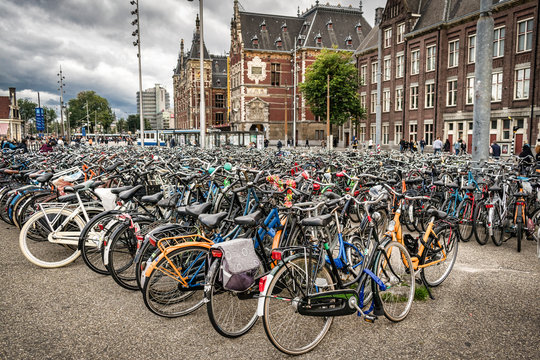
Amsterdam, a city of just over 800,000 residents, is home to more than 880,000 bicycles — more bikes than people.
Every day, around 60% of all trips in the city are made by bike or on foot, and only about 22% involve a car at all.
By contrast, in most American cities, cars account for 75–85% of trips, with walking and biking often treated as niche activities.
But it’s not just the number of bicycles here that’s different — it’s the way they’re used.
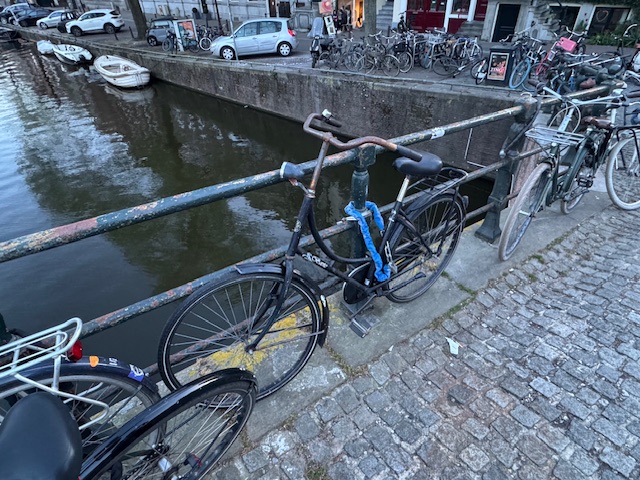
Bikes in Amsterdam are not shiny status symbols or sleek exercise machines. Most are well-worn, run-down, scratched, and practical — by design.
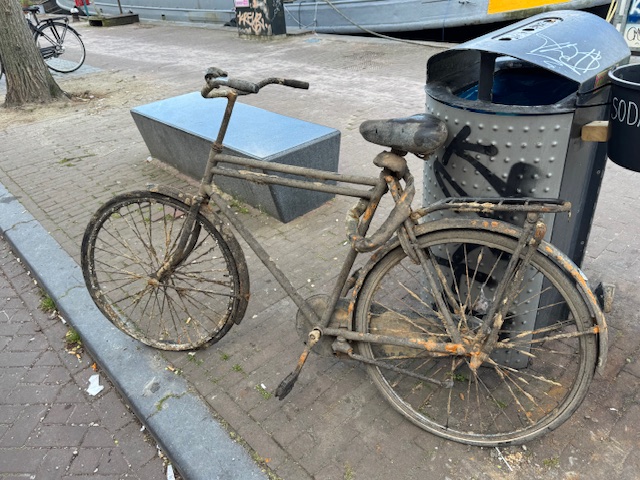
Why? Because a new or flashy bike is more likely to be stolen. The best bike in Amsterdam is often the one that no thief wants.
Many bikes have just three gears — not the 21-speed setups so common on American road bikes. They’re built for short trips, not long treks. Almost every bike has a bell mounted prominently on the handlebars — and they’re used often, with a polite ding ding to warn pedestrians or other cyclists.
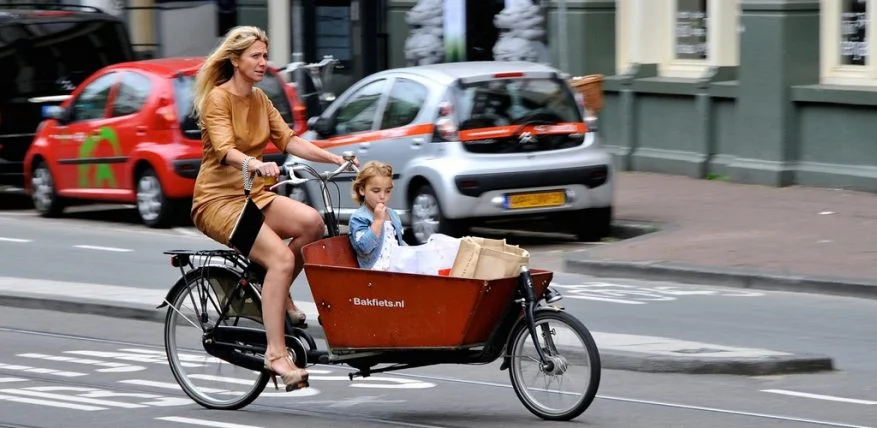
And nearly every bike has been customized in some small way: A child seat mounted to the back or front, a basket for groceries, a small platform for a passenger, even special racks to carry briefcases or flowers.
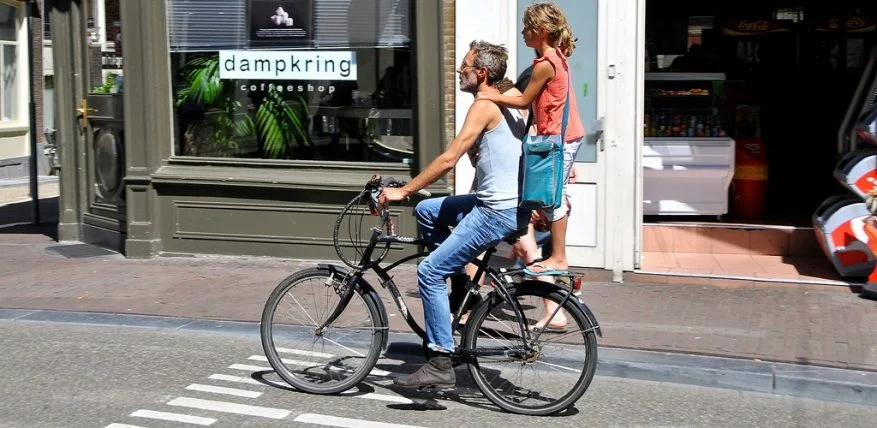
These bikes are working tools, woven into daily life. They’re how you get to work, to school, to the market, to a friend’s house. They’re not a hobby — they’re a way of living.
One of the most striking contrasts with the U.S. is the almost complete absence of bike helmets. In Amsterdam, you almost never see anyone wearing one. Children, parents, businessmen in suits, women in dresses — everyone just hops on and rides.
The streets are slower. The traffic patterns are different. The whole system is built to prioritize bicycles and pedestrians first, which changes the risks and behaviors dramatically compared to American cities designed for cars.
And then, tucked among the working bikes of everyday life, you spot something else: the flower bikes.
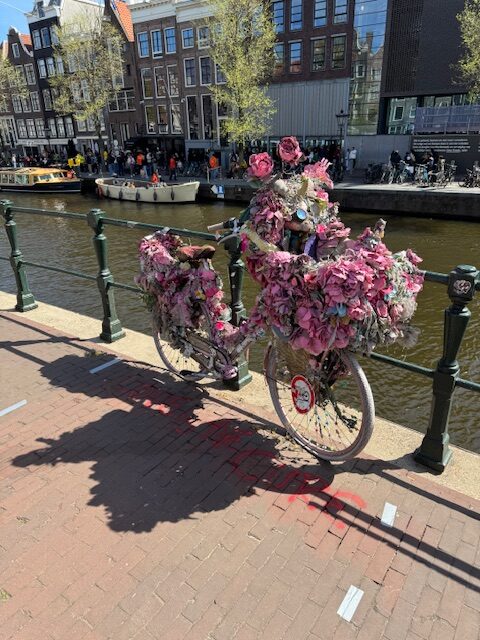
Bright, colorful, whimsical — these flower-adorned bicycles seem to spring up like gardens on wheels.
They’re not just random art installations. They’re the work of Warren Gregory, known around the city as the Flower Bike Man.

Originally from Florida, Warren started decorating bicycles to help his wife, Michelle, who lives with epilepsy and sometimes struggles with memory. By covering her bicycle in bright flowers, he made it easy for her to find among the sea of other bikes parked around Amsterdam.
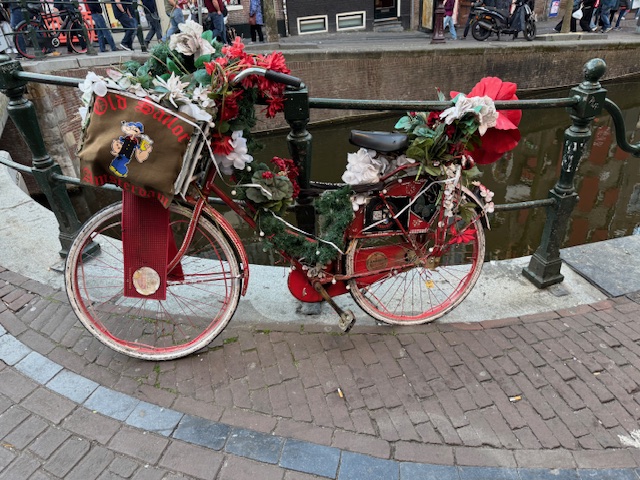
What began as a gesture of love grew into something bigger. Warren began decorating abandoned bikes with flowers, placing them along Michelle’s daily routes to guide her way.
Over time, these vibrant bikes became symbols of love, resilience, and community spirit — and eventually, street art in their own right.
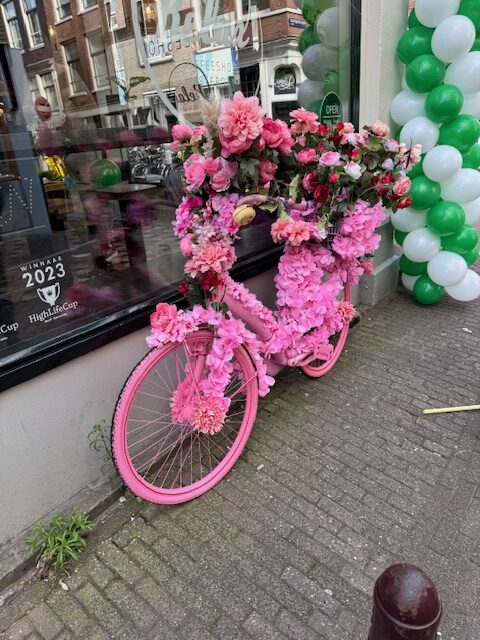
Today, Warren has created more than 300 flower bikes, scattered throughout Amsterdam.
They bring a burst of joy to the sidewalks, canals, and bridges, and remind locals and visitors alike that even small acts of creativity and kindness can blossom into something beautiful.
It’s a fitting symbol for this city, where biking isn’t about flash or competition.
It’s about getting somewhere — gracefully, functionally, and with a little bit of joy along the way.
In the U.S., biking often feels like a statement: about fitness, the environment, or personal identity.
In Amsterdam, biking feels like breathing — something so natural and ordinary that you don’t even think about it.
It’s a subtle but powerful shift.
And it makes you wonder what our cities — and maybe even our lives — might look like if we, too, built them first around people instead of cars.
In a city where bikes outnumber cars — and where even a forgotten frame can be turned into a bouquet — it’s clear that movement here isn’t just about getting from one place to another.
It’s about living, adapting, and sometimes, quietly blooming.
Author’s Note:
This blog is part of my 10-day journey through the Netherlands and Denmark with my daughter and grandchildren. I’m capturing moments, small and large, as we go — and I hope you’ll stay tuned for more along the way.
Lovely one Neil. Written so well
👍, Baze
Transportation as signature street art!
What a nice touch and loving gesture, by one man doing this for his wife. So colorful, and for spring, warms the heart. Thanks for sharing this, Neil.
Can’t wait to hear about your escapades with the grandchildren, too. We’ll stay tuned.
My heritage is Holland Dutch and never spending time there I’m enjoying Holland through your Eyes!!!
Love it!
The flower bikes brought me joy. Ttanks Neil. I do read all your posts and enjoy them 🌷🌸🌹
Bikes in Amsterdam have priority over pedestrians. Riders will yell at you if you get in their way.
Like your writing on this article, thank you.